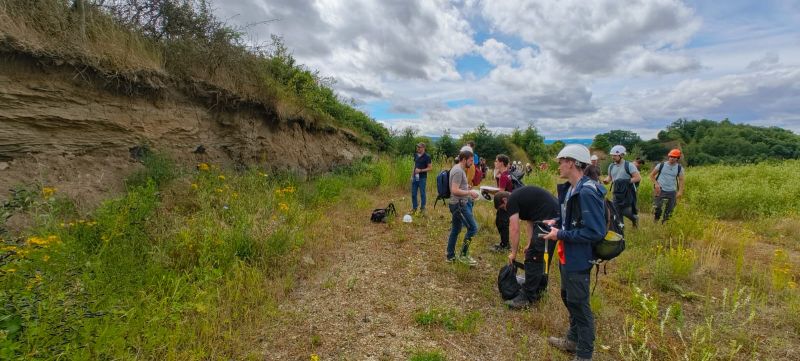
Out in the field from early on: Excursion to the Kunkskopf volcano
In their second semester, our geoscience students not only study theory and do laboratory work, but also get a first-hand insight into the field.
As part of the field exercise on endogenous and exogenous processes, the students travelled to Kunkskopf, an extinct volcano in the Eifel region, on 27 June. The aim of the module was to analyse geological structures and rocks where they originated: outdoors, in the midst of natural exposure sites.
The rocks of the Kunkskopf offer exciting insights into the processes taking place inside the Earth. On site, the students learned how to properly approach geological formations, describe rocks and make their first field sketches. In addition to the work at the Kunkskopf, the module programme also included visits to Upper Carboniferous formations at Lake Baldeney.
‘Especially at the beginning of their studies, it is important to bridge the gap between theory and practice. In that respect, Earth Sciences is unique because our subject matter can be just a short drive away,’ explains Prof. Raúl Fonseca, who supervises the excursion together with Dr. Stephan Schuth. ‘Through such excursions, students learn to link observations in the field with geoscientific knowledge.’
Early practical experience is an integral part of the programme: field trips, laboratory exercises and project work not only teach specialist knowledge, but also geoscientific methodological skills.
Insights like these make it clear that those who study geosciences learn not only from books, but also with a hammer, compass and sketchpad – outdoors, where our Earth can best be understood.